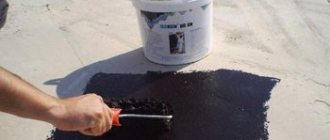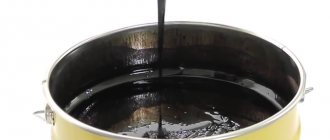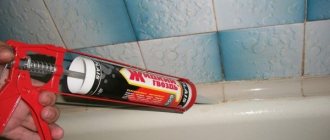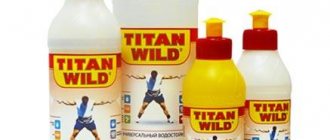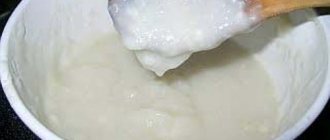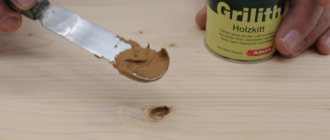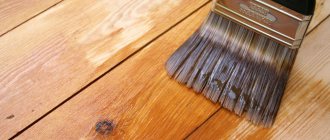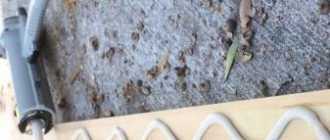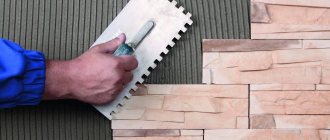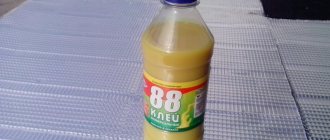The Technoprok company offers water-based bitumen-polymer mastics for waterproofing cold applications. This speaks volumes to specialists, namely: there is no odor and no heating is required.
Historically, bitumen-polymer cold mastic is called in Russia liquid rubber for coating waterproofing. Find out the characteristics and choose the method of waterproofing and liquid rubber HERE.
Modern bitumen-polymer mastic is widely used as a coating waterproofing for foundation work and waterproofing underground structures and as a mastic bitumen-polymer roofing or sealing bitumen-polymer roofing coating for the installation and repair of junctions and seams. When dry, the paste forms a dense protective coating without seams.
offers to buy high quality bitumen-polymer materials produced in Israel. The mastics and emulsions produced by the plant are applied cold and dry quickly. When drying, only water is released, i.e. there is no odor, no solvent emissions.
As of autumn 2016, you can buy bitumen-polymer mastic at retail in stores in Moscow, the Moscow region, as well as in the cities of St. Petersburg, Pyatigorsk, Voronezh, Kazan, Sterlitamak, Novorossiysk, Krasnoyarsk, Vladivostok. For all addresses and telephone numbers of such stores and retail and wholesale trade points in Russia, see the Contacts section.
The nuances of proper use of mastic
If the owner of the house has chosen cold bitumen mastic for insulation work, then he can immediately use it without prior preparation. You need to stir it, and then you can proceed to work. During the stirring process, you can see that the mastic has become more liquid. This provides convenience when working with it. It penetrates the coating better.
It is worth saying that the mechanical method of applying mastic is extremely rarely used. This material is too viscous for spray applications. Therefore, for convenience when carrying out work, it is worth preparing a roller or trowel in advance.
A brush for applying mastic is used if the material is in a liquid state. When creating a coating, bitumen mastic is applied in several layers. Each one should dry for at least a day. If repair work is being carried out on a roof made of roofing felt, then both sides must be coated with mastic, after which you should wait until each of them dries. You should wait at least 20 minutes. After this, gluing can be done.
An important point is the storage conditions of cold mastics. They must be closed and access to fresh air must be prevented. If the mastic is left open, it thickens within 24 hours and deteriorates, making it unsuitable for work.
In some cases, when carrying out work using mastics, additional reinforcement is performed using a special mesh. Its fastening is carried out in superimposed layers. The layer that covers the mesh should be 2 mm thicker than all the others in terms of thickness. When creating a protective covering, the mesh must be laid in the middle part of the covering.
If the weather is cold outside or there are light frosts, then using cold mastic is quite possible. Only in this case it is necessary to warm it up to a temperature of + 40 +60 degrees Celsius. If the outside air temperature has dropped below 5 degrees Celsius, then even heating will not help ensure a high-quality result. In this case, you should refuse to perform the work.
Application: where and when you need bitumen mastic for roofing
Let's list the main areas of construction where bitumen mastic is used today:
- Seamless waterproofing. We are talking about waterproofing foundations and piles, as well as installing a monolithic mastic roof.
- Repair and sealing of cracks in almost any roof, repair of roll coverings.
- Bonding roofing materials such as shingles and roofing felt, as well as fixing expanded polystyrene to the foundation of the house.
- Internal waterproofing of the house: basements, bathrooms and screeds.
Installation of mastic roofing
Bitumen mastic in liquid form is applied to the base, and during the hardening process it forms a durable waterproofing film without seams. This quality is indispensable for roofing. Thanks to this, the roof has protective properties, excellent waterproofing and high adhesion.
Good mastic does not deteriorate over time from ultraviolet radiation and does not become brittle from frost:
Let’s immediately make a reservation that most professional roofers are convinced that a reliable bitumen roof is impossible without reinforcement. One of the most proven technologies is laying reinforcing mesh.
To do this, you first need to thoroughly clean the roof surface, treat it with a primer, lay the mesh and fill it with mastic in two layers:
Hot bitumen mastic is used for laying roofing membranes using the following technology:
- Step 1. The first layer of membrane is laid on bitumen.
- Step 2. Make an incision at the seam.
- Step 3. Place the tape over the hot bitumen, with the fabric inserts facing up. Press it so that these inserts on the underside are completely saturated with bitumen.
- Step 4. Now lay the second layer so that the membrane covers 10-20 mm of the tape. In this case, hot bitumen is poured under the fabric inserts of the membrane.
The main thing in all this is personal safety, because hot mastic can leave serious burns.
Roof repair: description of the process in detail
Bitumen mastic is simply irreplaceable for urgent roof repairs. In this case, any other materials usually fail, because constantly falling rain causes a lot of problems, and the leak needs to be stopped. For example, local damage to ondulin is most often eliminated with bitumen mastic, which is additionally reinforced with fiberglass.
Here's how to repair a damaged area of the roof using cold bitumen mastic:
- Step 1. Cut the swollen area crosswise and bend the edges with a spatula.
- Step 2. Apply a sufficient amount of mastic inside the damaged area.
- Step 3. Press the edges of the cut to the center of the layer.
If necessary, install a new patch and reinforce it with additional construction mesh:
If you need to repair a metal surface, then follow these instructions:
- Step 1. Clean the metal parts of the roof from rust, organic pollutants and oil stains.
- Step 2. Apply the first layer of mastic with a brush or wide brush (preferably coarse).
- Step 3. Now - the second layer, using a brush or spraying.
At the same time, make sure that all cracks and seams are filled and coated, but the thickness of one layer does not exceed 4 mm.
Roof passage elements are also coated with mastic:
Characteristics of the composition of bitumen mastics
Roofing bitumen mastic is a material that contains artificially synthesized bitumen. They appear as a result of deep processing of oil from its resinous residues. These resinous substances greatly change their viscosity when heated. The color of bitumen is black or dark brown. Based on the degree of viscosity, builders distinguish several types of bitumen:
- To impregnate rolled roofing materials, it is customary to use liquid compositions based on bitumen.
- Bitumen mastics, roll materials themselves, and varnishes are produced from solid and semi-solid bitumen.
Exterior view of a roof covered with bitumen mastic
The composition of bitumen mastics includes substances such as filler, solvent and various additives. Roofing mastic stands out in that it is capable of creating a coating resembling a film or membrane, which will have all the properties of rolled materials, but without seams. It is noteworthy that there are types of mastics, such as bitumen-latex, which is used as an adhesive for laying rolled materials both on a new roof and on an old one being repaired. The big advantage of bitumen mastics is undoubtedly the ability to paint them in any color. Dyes can be added during roofing work directly into the mixture itself, or you can purchase already colored ones in the store.
Application of bitumen-polymer mastic
The material has been known in construction for a long time and is widely used due to its ease of application, as well as excellent chemical and technical properties.
- Repair and waterproofing of roofing
- Treatment of floors between floors indoors
For floors between floors, mastic is used in cases where a vapor barrier is needed between a room with a high level of moisture on one floor and a room on the other, located directly on the other side of the floor. Bitumen-polymer material protects concrete slabs from deformation and corrosion. - Waterproofing of internal and external walls
Protecting walls from dampness and mold is necessary at the stage of their construction. The bitumen-based material adheres well to the surface and forms a sealed, waterproof film. It is better to cover the walls inside the house with mastic with the addition of rubber or polymers, because they are more environmentally friendly, odorless and safe for human health. - Protecting wooden structures from rotting
The structure of houses contains wooden elements that need protection from moisture and microorganisms that lead to rotting of parts. Roof beams and wooden sheathing, the lower frame walls of frame houses are treated with bitumen-polymer mastic for waterproofing. The antiseptic contained in it destroys harmful microflora and significantly increases the service life of wooden structures. - Waterproofing the foundation and plinth
When choosing waterproofing for underground structures, bitumen is the best option in terms of price and quality. The strong and durable material, when bonded to concrete, provides waterproof protection to foundation walls. The elastic layer does not crack due to temperature changes and does not protect the foundation from the destructive effects of fungi and microorganisms. The same function is performed by bitumen-polymer mastic for waterproofing the basement, which, in addition to groundwater, is adversely affected by external climatic factors: rain, snow, low temperature. - Anti-corrosion treatment of metal parts
The universal material polymer-bitumen mastic is used in industrial production for the treatment of pipes and pipe systems. Anti-corrosion properties are used in the technology of protecting gas pipelines, oil pipelines and sewerage systems. The mastic is suitable for processing steel and reinforced pipes, fittings and tanks. - Noise insulation
Mastic bitumen-polymer cold application MBP is used as a sound insulation material. The sound-absorbing properties of “liquid rubber” are used in mechanical engineering. The body parts and underbody of the car are covered with a layer of cold mastic, thereby providing not only waterproofing, but also muffling sounds while driving. - Road construction
Hot bitumen-polymer mastic is used in road construction. When repairing roads, it is applied to asphalt concrete joints for strengthening. During installation of paving blocks, it is necessary as a waterproofing agent. Used to cover roads, bridges and reinforced concrete structures. This work requires special equipment.
MBK-G bitumen-polymer mastic is widely used for roof finishing. Before covering it with rolled material, it must be treated with a layer of mastic so that the adhesion to the surface is stronger, providing additional waterproofing. During routine roof repairs, bitumen-polymer filler will help level out deformed areas, fill cracks and strengthen joint seams.
Brief overview of the work process
In order to be able to control the quality of the house construction work, as well as its component parts, it is necessary to have at least a general understanding of the nuances. For example, if you plan to use rubber-bitumen mastic, you should know that it is suitable for a temperature range of -50°...+110° degrees Celsius. But before that, you should definitely warm it up at least at +5°. There are also relevant questions regarding the tools used. There are two options here:
- Hand tool. It is better suited in cases where it is necessary to treat small areas of coverage, apply bitumen mastic in limited space and cramped conditions.
- Mechanical tool. Used when working with large areas. Using a compressor with installed sprayers allows you to quickly treat the surface of the foundation with a composition from cylinders.
Mechanical tools are synonymous with fast work. Source nashaotdelka.ru
Knowing small nuances, you can assess the qualification level of those who will perform the work. By the way, bitumen-rubber mastic is suitable not only for working on the house, but is also loved by motorists. This material has good adhesion and is used with equal success on both horizontal and vertical planes. It provides protection not only for concrete and wood, but also for metals. The matter is not limited to the material.
At the same time, the challenge associated with finding reliable and efficient builders is relevant. Everyone chooses for themselves who will be involved in making the dream of their own home come true. But before doing so, it is advisable to compare at least several different companies to get the best idea of how things stand.
Advantages and disadvantages
Bitumen-based waterproofing solutions have many positive qualities:
- perfectly tolerate any aggressive influence of external factors;
- do not create problems with transportation;
- allow construction work to be carried out at any time of the year at any ambient temperature;
- long service life;
- simplicity and speed of application. This allows any home craftsman to carry out waterproofing with bitumen mastic independently;
- seamlessness of the finished coating, which eliminates the formation of leaks over time;
- excellent adhesion characteristics. This mastic can be applied to any type of surface without taking into account the main building material;
- low cost of many types;
- high efficiency of protection against moisture.
If we talk about the main disadvantages , then these include the following:
- require additional equipment when applying hot mastics;
- The high flammability of hot-applied solutions makes them unsafe. Therefore, only professionals should work with them;
- require a certain time to complete polymerization when working with certain species. Without compliance with this requirement, it is impossible to ensure compliance with the technical characteristics specified.
Video description
Here's a short video that should help you find the answer:
It was previously mentioned that the properties of bitumen mastic when waterproofing the foundation allow it to be used even in the presence of rust or contamination. This is true, but it is necessary to understand that comprehensive training, which includes a clean place of work, has a positive effect on service life.
Another point to pay attention to is the attitude of companies towards their employees. If it is good, there is a high chance that this will apply to all aspects of the activity.
Thus, working with bitumen mastic must be carried out in thick clothing specially produced for builders. To avoid damage to the eyeballs from particulate matter and caustic fumes, special glasses are used. If you work with hot mastic, you must use a respirator.
Moreover, safety regulations require that even when working on a simply hot day with high temperatures, no areas of skin are left exposed. Although it cannot be said that only the attitude towards employees is enough to judge the entire company and the results of its activities, the considered nuances are enough for the initial impression.
Employees who are cared for often show better work results Source cs7.pikabu.ru
Recognition of low-quality material
When purchasing something, you want it to be of high quality. By recognizing the problem in advance, you can avoid many undesirable consequences. You don't even need to open the container for this. The point here is that despite its density, mastic is lighter than water. Therefore, a 10-liter bucket cannot possibly contain a substance worth 10 kilograms or even more.
During production, the mastic is poured hot, and it has an increased volume. It is better to avoid all materials that do not meet the required weight values and not allow their use. Otherwise, the created waterproofing will last only a few years. Then you will have to redo it, spending your own time and money. To prevent this, bitumen mastic for waterproofing the foundation must be laid in compliance with technical requirements.
How to work correctly with bitumen mastic
So, you have high-quality bitumen mastic - how to use this material for roof waterproofing? Depends on the task. But before we begin a step-by-step description of the work, we will solve several important issues.
To heat or not?
Everything is clear with hot bitumen mastic - it must be heated before use. What about cold?
It is believed that if bitumen mastic has been stored at temperatures above 5 °C, it can be used immediately. At lower temperatures, a day before working with bitumen mastic, manufacturers recommend bringing a bucket of it into a warm room. It is optimal if the temperature in it is about 20 °C.
In practice, it is better to transfer the mastic to a room with such an air temperature in any weather. Because not only cold is harmful, but also heat. For example, if bitumen mastic is stored in a warehouse in the hot summer, then during the day it can easily warm up to 40 °C or more. This does not harm the material itself, but it is more difficult to work with: the mastic will spread strongly over the surface and structure faster due to the accelerated evaporation of solvents.
How to apply mastic
Depending on the type of bitumen mastic and the tasks, the composition is applied using different tools:
- with a roller, brush or soft natural brush . Such compositions are well suited for coating walls, chimneys, skylights and other objects on the roof to seal them. Liquid bitumen mastic also makes an excellent base coating for other roofing materials.
- Pouring with a hard brush on the handle, trowel. This application method is also used for liquid mastic. After pouring, the mixture is carefully leveled. But before applying bitumen mastic, strong unevenness must be removed from the roof, otherwise the coating will turn out to be of very uneven thickness.
- with a spatula or trowel . In particular, for fastening shingles and underlayment of soft tiles. In this case, the mixture must be spread in a very thin layer - no more than 1 mm. The spatula is also good for carrying out repair work, sealing with bitumen mastic the places where pipes pass through the roofing.
- Airless sprayer that produces a pressure of at least 150 bar. The fastest application method for liquid mastics, but it requires professional equipment and appropriate skills.
Separately, it is worth mentioning how to use bitumen mastic to seal expansion joints. If hot mastic is used for this, it is simply poured into the gap. Due to shrinkage, cold water must be poured into the expansion joint several times. Moreover, with a gap of several hours - this is enough for the mastic to decrease slightly in size, but not enough for it to dry completely. As a result, each subsequent layer adheres well to the previous one.
There is an even simpler method: for laying in the expansion joint, an already prepared plastic tape of bitumen mastic is produced. You just need to press it firmly into the gap, after which it will gradually spread and fill the entire space.
Is it possible to dilute bitumen mastic, and what is best to use for this?
Not advisable, but possible if necessary. The fact is that the density and consistency of bitumen mastic is carefully selected by the manufacturer for specific tasks. If you reduce its thickness, it will perform these tasks worse. But it can be used for others - it is for this purpose that the mixture is usually diluted.
Simply put, if you need to dilute the bitumen mastic before using it because it has thickened due to storage for too long, then there is no need to do this.
Firstly, with any dilution you change the properties of the mastic. It will be too fluid and may dry too slowly or, conversely, too quickly, which will lead to cracking of the coating.
Secondly, mastic is not brick or metal tiles, which, in fact, have no expiration date. This is a multicomponent mixture consisting of dozens of active substances that interact with each other. The shelf life is the time during which this mixture is guaranteed to retain its properties. Even the manufacturer cannot say for sure what will happen to the mastic after. It can create the same strong, durable and moisture-proof coating, but it can crack in a couple of months. Do you need such unpredictability when building the roof of a house? This is a rhetorical question.
If you want to use mastic left over from other work, for example, as a primer, then this is quite acceptable. Actually, the primer is almost exactly the same bitumen mastic, only very liquid and applied in a thin layer. You can dilute the mastic with white spirit, gasoline, solvent, kerosene. It is forbidden to use diesel fuel - it will ruin the material.
Before working with bitumen mastic, do not forget to wear gloves, goggles and a respirator. To dilute, the bucket of mastic needs to be heated, preferably in a water bath. It is prohibited to heat mastic over an open fire - it is dangerous to life. Remember that the solvents that are in the mastic and that you will pour into it are very volatile explosive substances.
It is necessary to gradually introduce the required amount of solvent into the heated mass, stirring it constantly. It is better to use a drill with a mixer attachment. The diluted mastic must be cooled to room temperature before use.
How to properly use bitumen mastic for roof waterproofing
The creation of a finishing roofing coating from bitumen mastic is carried out in seven stages:
- Carefully level the roof: seal cracks, holes and other irregularities, especially those with sharp edges - in these places the mastic coating can simply tear. Wait until the solution dries completely.
- Clean the roof surface and remove dust. Garbage is removed with a regular broom; for dust removal it is ideal to use a special industrial vacuum cleaner. An alternative is to wash the roof with a stream of clean water under pressure.
- The dried, clean roof is coated with two layers of primer. The second layer is applied only after the first has dried. This is necessary to increase the adhesion (adhesion) of bitumen mastic to the base.
- Before using bitumen mastic, mix it well to obtain a homogeneous mass without inclusions or separation of the composition.
- The finished bitumen mastic is applied in layers. The coating must be continuous, without unpainted areas. Apply the mastic in parallel strips so that there are no drips or sagging.
- The first layer is allowed to dry - this usually takes 6-8 hours. Readiness can be checked simply: when the mastic has dried to the desired state, it will not stick to your hands.
- The second layer is applied on top of the first layer. He is also allowed to dry. The process is repeated until the total thickness of the mastic roofing is the desired thickness - usually 4 mm. Some manufacturers may have their own standards, so be sure to check the packaging information.
- The finished roof is sprinkled with gravel, sand and other mineral bulk substances. The main thing is that they do not have sharp edges that could damage the coating.
The use of bitumen mastic is only possible in dry weather at temperatures of -5 ° C and above. No moisture should get on either the base or the intermediate layers. The mastic roof can be wetted approximately 24 hours after applying the finishing layer. To increase strength, fiberglass or other reinforcing material can be placed between layers of mastic.
How to use bitumen mastic when installing roofing materials
Bituminous mastic is used for gluing rolled roofing, flexible tiles, lining and valley carpets. Depending on the manufacturer and type of material, approaches to using mastic may differ. But there are a few general rules:
- The mastic is applied in a thin layer, usually about 1 mm.
- To install a soft roof, a special paste-like bitumen mastic is used; for gluing rolls of roofing felt and similar materials, liquid mastic is used.
- When applying mastic, special attention is paid to the edges of rolled materials and joints.
- When making connections, bitumen mastic is applied both to the roof and to the wall or pipe. In this case, you need to cover 30 cm of the vertical surface for reliable sealing.
- If abutment strips or passage elements are not used to make connections, then the mastic is applied in several layers, reinforced with fiberglass or non-woven fabric. This is necessary so that the mastic coating holds its shape and does not “float”.
Bitumen mastic, which is used as an adhesive composition, as a rule, does not contain reinforcing fillers.
Roof repair using bitumen mastic
In addition to creating new roofing coverings, bitumen mastic can be used to repair old ones. Although this is often a temporary solution for one or two seasons.
When repairing a roof, the area of leakage or damage is cleaned and thoroughly dried. This is important because often water that gets under rolled bitumen materials does not find a way out for a long time and remains under the coating, damaging it. In addition, before using bitumen mastic, be sure to clean off the protective mineral coating in those areas of the roof where the patch will be glued.
Now about how to use bitumen mastic for roof repairs:
- A rectangle is cut out of fiberglass or roofing felt, the edges of which should protrude beyond the damage site by at least 15 cm. This is an internal patch.
- A second rectangle is cut out of the same material, which is 10-15 cm larger than the first on each side. This is an external patch.
- Apply bitumen mastic in one layer to the damaged area and allow it to dry. The mastic layer should be the same size as the outer patch.
- An internal patch is laid on top of the first layer of mastic and pressed with a roller.
- A second layer is applied to the inner patch and to the first layer of mastic looking beyond it.
- An outer patch is glued onto the bitumen mastic and covered with another mastic layer.
- The final layer of mastic is protected from UV rays with quartz or shale sand. Other mineral powders can be used, but they should not have sharp edges.
If you need to repair small cracks in the roofing, bitumen mastic can be applied without fiberglass reinforcement.
Video description
And finally, a short video for everyone who is just thinking about building their own home and studying material on this topic:
Bituminous mastic has all the necessary properties that allow it to be effectively used for waterproofing and protecting a home from moisture. And knowing the information provided, you can exercise effective control over the execution of work. After all, no one knows better than the customer what he needs. And in order to get the desired result, you should maintain feedback and, if necessary, make adjustments.
Preparing the foundation surface
When preparing the foundations, sequentially:
- The strength and moisture content of the hardened concrete is checked. It is recommended to start waterproofing work at least a month after concreting. When working with old bases, the surface is cleaned of weak and flaking particles, all possible cracks are covered with a solution and reinforced with fiberglass mesh.
- The evenness of surfaces is checked and possible imperfections are eliminated. At this stage, sharp protrusions larger than 2 mm will be removed or hidden, and masonry joints and cracks will be covered. Problem areas and joints are reinforced with mesh if necessary.
- The foundation walls are cleaned, dusted, treated with primer or antiseptic primer and dried well.
Impregnation of concrete with primer is an optional, but important action aimed at reducing mastic consumption and improving the quality of its adhesion. If there are no other insulating layers, this work should not be skipped; expensive primers can be replaced by the same mastic in diluted form.
What it is?
The material in question is an asphalt-like coating with rather unusual characteristics. It is used in a number of areas, but it will be especially indispensable in construction. Liquid bitumen is almost always used in laying roads, making roofing materials, and also for waterproofing various objects. It is used both in the construction of large industrial facilities and household ones.
There are two types of bitumen:
- natural;
- artificial.
The first is the product of natural oxidation of various petroleum substances. It practically never exists in its pure form. Most often you see certain asphalt components - limestone and dolomite, impregnated with bitumen-based resin compounds. They are crushed and, after turning into powder, used for asphalt. Well, or bitumen can be extracted from rocks.
The second type is the result of industrial type processing. This process requires a method of vacuum distillation of tar or its forced oxidation using air blowing. The first option is rarely used due to the fact that production is quite expensive, but the second is always used.
Similar raw materials are also used:
- for the foundation;
- asphalt;
- waterproofing;
- concrete;
- wood;
- connecting pipe sections.
Features of application
It is impossible to most effectively solve the problem of waterproofing without knowing the specifics of working with bitumen-based mastics.
Mastic consumption
Before starting work, you need to find out in what quantity you need to use mastic to create a waterproofing layer. To do this, first of all you need to study the manufacturer's instructions. Most often, the recommended consumption rate is given on the pack with the composition.
If there are no such instructions, but there is information about the preferred layer thickness, then you can calculate the optimal amount of waterproofing composition yourself. To do this, you need to focus on the following values, which correspond to standard consumption indicators for cold-applied mastics:
- 2−4 kg/m2 for foundation treatment;
- 3.5−6 kg/m2 when arranging the roof;
- 1−2 kg/m2 for laying roofing felt or other roll covering.
Please note that when using hot mastics, the consumption will be slightly higher, but in any case it should not exceed the maximum rate for using cold-applied material.
Application technology
To better understand how exactly surfaces are treated with bitumen-based waterproofing compounds, let’s consider the situation with applying bitumen waterproofing to the foundation.
To perform this work correctly, it is carried out in stages:
- The waterproofing compound can be applied only after the poured concrete has completely hardened.
- It is first necessary to prepare the surface to be treated and examine its condition. All detected cracks, chips and other irregularities must be eliminated.
- All debris, dust and other types of contaminants must be removed from the surface.
- After this, you need to apply a layer of primer or bitumen primer 1-2 mm thick.
- If you do not have the required type of emulsion, then you can prepare a solution for preparing the base yourself from the main mastic, for which it must be diluted with water in a 1:1 ratio.
- Now wait for the primer to dry. If you are working with hot mastic, first heat the required amount to a temperature of 160-200 degrees. Remember that the composition sets very quickly, so you should already have everything ready to quickly apply it to the surface. To avoid additional complications, it is recommended to heat not the entire mass at once, but its individual parts, which will allow you to treat only a specific area.
- Start applying the main layer of waterproofing, remembering that its thickness should not be more than 2-4 mm.
- When creating a waterproofing layer, pay attention to ensure that there are no streaks or areas of excessive saturation of the solution on the surface.
- Wait until the manufacturer's recommended drying time has passed.
- After this, you can begin applying a second additional layer, observing the same time intervals.
Keep in mind that when working with bitumen-based mastic, you can create no more than three layers. This distinguishes it from other waterproofing compounds.
Technology of work execution
To waterproof the foundation of a house with your own hands, efficiently, it is recommended to do the following steps in order:
Bitumen protection of the foundation from moisture
- Surface preparation. Clean the foundation thoroughly from dirt and dust. Remove all deposits and dirt. If there are cracks or chips on the surface of the base, we level it with cement or another solution intended for this purpose. After proper cleaning and leveling of the base walls, degrease. The optimal solution is to use a solvent. After the walls have completely dried, we move on to the next stage of work.
- Surface primer. To ensure good adhesion of materials with different properties, we prime the foundation surfaces. As a rule, to speed up such actions, they use a ready-made primer composition, which can be purchased at a hardware store. But you can also use a homemade primer. The recipe is quite simple: mix regular mastic with a solvent. Next, apply the finished primer with a brush.
- Open the container with the waterproofing compound. Before using the waterproofing agent, you must open the container and mix the mixture. To facilitate and speed up the process, as a rule, an ordinary drill is used.
- Apply the first layer to the surface. For high-quality surface coating, use a roller or hard brush. Using this tool, apply the first layer evenly. You need to carry out actions without haste. At the same time, it is imperative to control the proper layer thickness.
- Application of subsequent layers. We wait until the waterproofing layer dries completely. Afterwards, apply the next layer, repeating steps 3 and 4. For high-quality waterproofing of the foundation, it is necessary to apply at least 3-4 layers of bitumen mastic.
- Backfilling of the foundation. When the final layer of waterproofing has completely dried, we perform a high-quality backfill of the foundation.
Application of bitumen
As can be seen from the above, the technology for processing the base is quite simple. It should not cause any difficulties. The only difficulty is the uniform distribution of the viscous composition over the surface of the base walls. Here you can’t do without ingenuity and due scrupulousness.
How to use
There are two methods of applying the composition to the surface. The first method involves carrying it by hand, and the second - by spraying. If the area is large or complex in shape, then special equipment is used for application, which creates high pressure without the participation of air. The result is a solid, monolithic coating that dries evenly.
In order to treat a small area, use a rubber spatula/brushes.
Process:
- Before applying to the surface, the composition is thoroughly mixed. If necessary, the solution is diluted with a solvent.
- Then clean the surface from accumulated dust and dirt.
If the base is porous, then the surface must be pre-primed.
- The composition is applied using a brush/spatula.
If you are going to apply the solution at sub-zero temperatures, it must be preheated.
The composition is heated manually using an open fire or a special stove.
Compound
Mastic consists of bitumen and granular minerals. The exact chemical composition according to GOST depends on the type and scope of use. As a result, even waterproofing is produced - a dense insulating material.
Various ingredients, such as mineral filler, petroleum products, resin, plasticizer, crumb rubber and additives, guarantee specific properties to the final product. Oil products can be used to insulate oil and gas pipelines.
The composition consists of a bitumen binder material and granular asphalt concrete particles with a diameter of no more than 2 mm, and they make up 50% of the total composition. Based on the weight of aggregates and crushed granular asphalt, the diameter of which does not exceed 2 mm, the binder component contains recirculation, and its amount is at least 15% by weight.
Due to the fact that the composition has a shear modulus of no more than 2 thousand MPa at -10 C and a frequency of 1 Hz, it can be reused. It has the same characteristics as the above prepared composition. Can be used as a filler for road surfaces. It has been found that it is possible to produce a combination of fine granular asphalt elements and bitumen binder that has similar properties to the freshly prepared types.
Physical and mechanical properties are similar.
The material may contain the following oils:
- vegetable;
- soy;
- sunflower;
- rapeseed;
- corn;
- peanut;
- olive;
- coconut;
- Palm;
- palm kernel.
Receipt method includes:
- providing a solid material containing regenerated granular particles that have a maximum diameter of not more than 2 mm and recycled bitumen;
- obtaining fresh bitumen and rejuvenating agent (optional);
- mixing the solid material with fresh bitumen to produce a mixture containing regenerated particulate matter and a binder consisting of a recycle component and a rejuvenating agent (optional);
- extracting a mixture in which bitumen ranges from 15 to 75%.
Areas of application
As mentioned above, the scope of application of the substance is quite diverse. Thus, the building material can be used for both internal and external work. The mixture is used to process many materials:
- flexible tiles;
- wood;
- concrete;
- tiles;
- roofing felt;
- asphalt;
- stone;
- metal
The main purpose of using a building mixture is waterproofing, protection from corrosion processes, as well as other negative influences from the environment. Accordingly, the building material can be used when arranging swimming pools and baths, stoves and windows, for processing the seams of a panel house, interpanel spaces, as well as during the creation of such an element as a soft sound-proofing surface.
At the same time, it is very important to carefully and carefully approach the choice of material: you need to take into account the type, composition, purpose and other key characteristics. In addition, you must follow all the rules for using the material - otherwise you will not be able to achieve the desired result.
General technology and rules of application
The very first step in creating roof waterproofing is thorough cleaning of the base. The old coating is removed from it, all debris is removed and dust is removed. Next, apply a bitumen primer to a clean, dry base. To do this you will need a regular paint brush.
Very important: do not skip the step of cleaning the base under any circumstances, since without preparation it can be very difficult to create a layer of approximately the same thickness.
To apply cold mastic, use spatulas, rollers or brushes. This method is quite expensive, since it is more difficult to control the thickness of the layer.
Manual application of bitumen mastic
With the mechanized method, a special airless sprayer is used, which supplies the composition under a pressure of 150 bar.
Mechanized method of applying mastic
Important: the sprayer must have the function of mixing components inside the unit.
How to apply mastic correctly:
- Before starting, if necessary, warm the composition at room temperature, leaving it indoors for one day.
- Using the instructions, add solvent to the mastic and mix everything thoroughly.
- After cleaning the base and treating with primer, dry the roof.
- Pour a small amount of the mixture onto the roof and spread the mixture using a mop or scraper.
Please note: to increase the strength of the resulting waterproofing, you can lay a reinforcing mesh on the roof surface, and only then apply mastic.
To repair a metal roof, you need to clean it from oil stains, rust and organic contaminants, and then apply mastic in 2 layers, preferably with a coarse wide brush. It is also necessary to coat all passage elements and their joints with the roof with the composition.
Treating the junctions of elements with the roof with mastic
If local repairs to the roofing are necessary, then simply cut the swollen area crosswise, then bend the edges and apply a sufficient amount of mastic under them. Next, all that remains is to press the edges back. If necessary, you can additionally place a reinforcing mesh on the damaged area.
Local repair of roofing covering with mastic
Useful tips for effective use of mastic:
- When processing vertical planes, several layers are made.
- In order for the composition to adhere well, it is worth applying it from bottom to top in parallel stripes to the very top of the structure.
- For better mixing, you can use a drill with a special mixer attachment.
Recommendations for the use of roofing bitumen mastic
- Substances based on kukersol varnishes are best suited for concrete structures.
- For waterproofing, it is recommended to choose rubber-based compounds. This is explained by the fact that the solution, which includes rubber, has good elastic properties and fluidity.
- For roof installation, choose a polymer/rubber based solution.
- For spot work, oil compounds are used, as they form a coating that is resistant to high temperatures.
A common type of waterproofing mastic is bitumen mastic. Waterproofing based on it has been used for a long time, is inexpensive and provides a range of high-quality works at reasonable prices.
Traditional bitumen mastic is based on resin. Fillers and modifiers are added to it, increasing its properties and characteristics. Bitumen mastic is a universal product, valued by craftsmen, and waterproofing using it is widely used.
Quality issues: why sometimes mastics don’t harden
You've probably heard about the problems roofers face: sometimes mastics don't dry at all, are difficult to apply, emit an unbearable odor and drip.
The thing is that in our country all bitumen mastics are conventionally divided into three price segments. In fact, all the characteristics of bitumen mastic directly depend on what pricing policy it is in and who its manufacturer is.
The premium segment, which includes products from domestic and foreign manufacturers, is high-quality mastics, durable and frost-resistant. Some of them are even modified with SBS rubber. They dry quickly and hold up well because they are made on the basis of bitumen of a grade not lower than BN 70/30.
By the way, so that you understand a little about the quality of the purchased mastic, we will tell you the decoding of this value: 70 means heat resistance (softening temperature), and 30 is the temperature at which a needle can penetrate the mastic (mechanical resistance). And finally, premium mastics contain relatively non-toxic petroleum solvents.
Bitumen mastics in the mid-price segment are currently produced by seven Russian manufacturers. Frankly speaking, these are average quality mastics based on bitumen, starting with the BN 50/50 brand, occasionally with rubber additives. They use cheap petroleum solvents, and therefore the surface treated with them will dry for 24-72 hours per layer. And it is these mastics that give off an unpleasant, pungent odor.
But the cheapest mastics have received a completely negative reputation, which, as they say, cast a shadow on the entire segment of bitumen waterproofing. They do not meet any GOST requirements at all, and are similar to ordinary mastics only in color.
It is these mastics that hardly dry and are completely useless as a repair material. However, they also have their own scope of application. Such mastics are made from just one fraction of oil, called tar, and a little real construction bitumen is added as an additive.
As a result, such mastic, even after curing, flows off the surface at an angle of 30°, dries for more than a week and still remains sticky, and each season requires its own renewal. Cheap mastics do not stick to surfaces at all, are toxic and emit a terrible odor.
And the sad thing is that if you decide to re-treat everything with another mastic, this one will have to be scraped off by hand to scratch. Why can't you leave it? The fact is that bad mastics have the same poor adhesion, and pouring a new coating will not fill the cavities under the old one.
This is what this mastic looks like a year after application:
Roofing bitumen mastic is subject to increased requirements for frost resistance and weather resistance. That is why this category is specially further modified with an elastomer such as SBS - styrene butadiene rubber.
This allows the mastic not to crack over time, especially during periods of frost. Do manufacturers of cheap mastics take all these features into account? Hardly.
Waterproofing bitumen mastic
Bitumen mastic is widely used in roofing and insulation work. It is also used as a primer. The composition includes mineral and organic substances, as well as additives that help improve the characteristics of the mastic.
Cold application mastic has a number of valuable characteristics:
- dries quickly;
- suitable for spot repair work;
- Even a beginner can handle applying the substance;
- unlike hot mastic, cold mastic does not require special equipment;
- suitable for working with wood, metal, concrete and plastic;
- stretches well and is elastic;
- penetrates into the coating to which it is applied;
- Water-based compounds are used for internal insulation.
In addition to the positive qualities, this waterproofing material also has negative aspects:
- UF rays negatively affect the composition;
- it is difficult to control the thickness of the resulting coating;
- high price (hot mastics will cost less than cold ones).
Positive sides
Advantages of using waterproofing mastic:
- combines excellent technical characteristics and low cost;
- easy to apply;
- sticks to various surfaces;
- does not emit harmful, toxic substances, therefore it is used for both external and internal work;
- when exposed to moisture, the film does not swell;
- durable and easy to use.
Waterproofing mastic reliably protects treated surfaces from the formation of rust, the appearance of fungus, mold and the proliferation of microorganisms.
Main varieties
When purchasing bitumen mastic, you should know exactly the composition and application technology of the product in order to use it for its intended purpose. According to the method of application, all products are classified into “cold” and “hot”. Before treating the foundation, they should be brought to a certain temperature. Many manufacturers offer “hot” mastics in their assortment, which vary in heat resistance. They are used by professional builders who are familiar with all safety regulations. If you plan to install the waterproofing layer yourself, you should choose “cold” mastics. This type of coating material is much easier to use and does not require complex preliminary preparation - usually the mastic is only thoroughly mixed. Only in the cold season for simple application the material needs to be slightly warmed up. In winter, at sub-zero temperatures, special bitumen-polymer compositions from trusted manufacturers should be used.
Mastics for waterproofing are organic and water-soluble, one-component and two-component. Products that contain one ingredient do not need to be prepared for application to walls. You can take the mixture out of the package, mix well and start styling. Two-component mastics must be pre-mixed and started working immediately so that the material does not have time to harden. They are characterized by an increased shelf life and strength after application, but due to a number of difficulties they have not yet become widespread in construction and finishing activities. Mastics are also classified according to the state of hardening - some compositions remain semi-solid even after final setting. Bitumen is the main component of a reliable waterproofing composition. The following types of mastics can be distinguished, which it includes:
- Rubber - have excellent viscosity, density, elasticity, and can be diluted with solvents if necessary. The drying time for each layer varies from 6 to 12 hours. Material consumption can reach 1.5 liters per square meter. For ideal adhesion and film formation on the surface of the wall, it is first moistened. A primer is not needed when working with bitumen-rubber mastic.
- Water-based with several modified polymer substances. They do not have a strong odor, are ideal for interior and exterior decoration, perfectly protect the foundation from destruction and dry quickly in 5-7 hours.
- Latex (based on rubber and water emulsion) are one-component formulations that are sold in finished form. Before application, it is recommended to treat the surface with a primer. There is no need to heat this mastic even in cold weather.
- Oil-based - resistant to negative temperatures. Pre-dilute with solvent or gasoline.
- Primers. They must be diluted with water or a solvent, have a liquid consistency, and are easily applied to the surface with a brush or roller, using a special spray bottle. The drying time of this composition does not exceed 4-5 hours.
What is important to consider
Pay special attention to protective equipment - it is strongly not recommended to start work without gloves and special clothing. The active substance is highly flammable, so do not smoke or use open fire during application.
If the solution gets on the skin, wash it off immediately with soap and water!
The composition should be stored in a dry room where air circulates well. In this case, the temperature regime is maintained in the range from –20 to +30 °C. Mastic can be used throughout the year.
Roofing materials by degree of hardening
Hot compositions are prepared for use by heating the mastic to 180º. In this state, the mastic has the most flexible consistency and good adhesion, which makes it possible to obtain high-quality waterproofing. Professional soft roofing professionals note hot mastic as the most effective for performing roofing work, especially on large roof areas.
Like any material, hot application of mastic has its disadvantages:
- the need for additional equipment for heating the mastic;
- the danger of performing work outdoors in strong wind conditions;
- difficulties in performing work at low temperatures.
Cold application roofing mastic is a viscous liquid of a homogeneous mass, ready for use. If necessary, it can be diluted to a more liquid consistency with solutions of white spirit, solvent, or kerosene. Some types of mastics should be heated to a temperature of 30-40º before use.
The material is most convenient to use from a safety point of view, so it has recently been in great demand for minor roof repairs, waterproofing foundations, when working on insulating complex roof structures, ridge junctions, valley elements, exhaust pipes, etc. The material is also widely used in installation of soft roofs on flat roofs of any size.
There are water-based bitumen mastics that are recommended for waterproofing basements and bathrooms. This type is one of the most environmentally friendly mastics, since the base of the material consists of natural ingredients with the lowest concentration of toxic substances.
To summarize, in conclusion, there are several recommendations for the attention of readers on the use of roofing mastics.
When choosing mastic for the roof, you should not focus on cheap materials. The British say they are not so rich that they can afford cheap things.
And a quality product always keeps its price, this statement is always relevant and indisputable.
Which one is better to choose?
Preference is given to ready-to-apply waterproofing mastics for foundations and floors that can withstand short-term exposure to water under pressure in excess of 0.003 MPa and have minimal (ideally no more than 1-2%) water absorption rates after drying.
When choosing a specific brand, the following are taken into account:
adhesion indicators with concrete and rolled materials (the higher they are, the better);- declared consumption and proportion of dry non-volatile substances in the mastic residue;
- heat resistance of the mastic (ideally above 100 °C, but not less than 70);
- appearance and weight of the composition - high-quality mastic has a uniform plastic structure and weighs less than water, in practice this means that its weight should not exceed the volume of the container; heavier, cheaper brands crack faster and collapse after 1-2 years.
Specialized brands TechnoNIKOL and Grida MGH-G meet these requirements. The use of universal mastics (essentially roofing mastics) is permissible only on dry, non-aggressive and permeable soils, shallow foundation depth and low groundwater level.
Compound
Bitumen mastic is a classic product used for coating or painting waterproofing, which is created on the basis of refractory petroleum bitumen. It is a viscous, viscous, thick liquid of a dark color with a pungent odor. When applied and then hardened, the mastic hardens, forming a monolithic film that does not allow water to pass through. This waterproofing material is valued for its economical consumption and ease of do-it-yourself application. Rubber bitumen varies in composition, it is divided into the following categories:
- Bitumen. They are produced on the basis of natural light bitumens, which are by-products of oil refining. They are characterized by low price, less weather resistance and longer service life.
- Polymer. Synthetic rubber mastic is a modern waterproofing material that has increased elasticity, resistance to external factors, and a long service life. The consumption of synthetic rubber bitumen is much higher than that of simple bitumen.
- Bitumen-polymer. Mixtures of natural bitumen, plasticizers that improve the quality of the material, and synthetic rubber combine the positive qualities of both materials and are affordable.
Mastic based on petroleum bitumen is a multifunctional product used in many branches of construction. To make this material suitable for use in a variety of environments, manufacturers produce it in several forms. Much more often the following types of rubber-bitumen are seen on sale:
- Warm rubber mastic. Warm mastic is a rigid waterproofing agent, the use of which is carried out by melting. Rubber-bitumen of this type is melted over a fire at a temperature of 170 degrees so that it turns into a liquid state, after which it is applied to the surface to be treated. This type of mastic is characterized by economical consumption and affordable price. But, using it when working with your own hands is problematic, since it is used only at temperatures from +5 degrees, therefore it requires the use of special equipment.
- Cold mastic. This type of bitumen-based waterproofing material is produced and sold in plastic or iron buckets in liquid form. Immediately after opening the container, it is ready for use, which makes it more ergonomic to use. The consumption and price of cold mastic is higher than hot mastic; therefore, it is used only for spot repairs and for small-scale work.
Video: polyurethane mastic for roof repair
Mastic is a seamless, seamless waterproofing that creates a powerful waterproof layer and protects building surfaces from the destructive effects of moisture. If you are looking for a universal finishing agent that can act as an independent insulating layer, and also have the additional function of a decorative agent, then this material will more effectively cope with the tasks.
This is an environmentally friendly and safe substance that will protect the monolithic structure from the effects of water and its derivatives, thereby extending the life of your building.
What is bitumen, pros and cons
Bitumen is an asphalt substance that is obtained after processing petroleum products; the product looks like a black resin. Bituminous mastics also appear as a black resin that looks like a paste. It stands out for its viscous and plastic properties, which helps to apply it to the surface with ease. To increase ease of use, as well as improve the characteristics of the coating, the product contains other polymer additives to create a layer that will not allow liquids to pass through, creating an invulnerable coating.
Also, to improve the properties of the material, thickeners are added; they help to create a high-quality insulating coating on the surface. Elements are also used that prevent cracking of the layer, substances to create a good degree of adhesion to different substrates. To obtain anti-corrosion characteristics, the composition contains special additives.
As a result, the use of data and other elements, which may vary slightly depending on the type of product, results in an even sealed layer. Through which water simply cannot penetrate to the base. Among the advantages of liquid mastic, the following are emphasized:
- Receiving a coating without seams, which eliminates leakage;
- Helps make the surface smooth and cover small flaws in the material;
- High level of connection with the base, which prevents detachment and swelling of the base;
- The surface of the layer does not crack;
- Can be applied to rusty areas on iron; can be used to cover an old roof;
- Durability, service life reaches 25-30 years;
- High tensile strength, increased mechanical stress will not lead to loss of integrity of the product;
- Ease of use;
- Does not exert heavy loads on the roof;
- You can use a thinner to prepare a product of any consistency.
High tensile strength, increased mechanical stress will not lead to loss of integrity of the product.
Many advantages do not exclude the presence of disadvantages of the solution. The following disadvantages can be identified:
- To work, you need to get a flat base, otherwise the viscous consistency will lead to differences in the mastic along the inclined zones. To correct this issue, you can add thickeners and a cement mixture. If there are significant holes or bumps, it is recommended to level them first so that the layer is reliable;
- Acceptable operating conditions do not include rain and negative temperatures, so the possibility of use is somewhat limited by weather conditions;
- It is difficult to regulate the thickness of the mastic distribution over the surface, which sometimes leads to excessive consumption of the composition.
These pros and cons of the mastic product determine its popularity; of course, there are disadvantages, but they are justified by the benefits obtained from using the product.
Acceptable working conditions do not include rain or negative temperatures.
Characteristics of polymer mastic based on bitumen
The technical characteristics of bitumen-polymer mastic depend on the composition of the material, but there are properties characteristic of all its types:
- reliably protects moisture, creating a durable, elastic film on the surface;
- when applied to the surface, it penetrates deeply, filling voids, cracks and pores;
- prevents corrosion by creating a protective barrier on the surface;
- antiseptic and waterproofing properties prevent the formation of mold, mildew and other microorganisms;
- The dense and elastic structure of the resulting film prevents the formation of chips and cracks due to vibration and mechanical stress.
How to apply mastic?
Both application methods are quite technologically advanced and provide an excellent opportunity to carry out work related to the roofing device, quite simply and quickly, regardless of the angle of inclination of the roofing surface. This is clearly noticeable when installing a roof, which has a huge number of different elements and connections.
When covering pipes, load-bearing structures, shaft roofs, etc., it is necessary to spend a lot of time and effort cutting out rolled material, while mastic makes it possible to make exactly the same even coating, but much easier and faster, which is why mastic prevails over rolled materials.
Important points when working with polyurethane-based materials
Like all protective products, acrylic waterproofing mastic has a number of features that must be taken into account during its operation and storage:
- It is important to note that after applying the last layer of insulating material, it is necessary to ensure that the finishing surface is dry and prevent contact with moisture for 24 hours.
- mastics from different manufacturers and companies cannot be mixed with each other;
- If the insulation gets on areas of the skin, it is necessary to wash it off under running water. This waterproofing is a non-toxic substance, but has a high level of adhesiveness, so it is very difficult to remove after drying.
- It is necessary to carry out work related to the protection of surfaces away from direct sunlight, as well as away from fire;
- Once the substance is opened, it can be stored in a tightly closed container at a temperature of more than five degrees for a period of less than one year.
Consumption of bitumen mastic
Material consumption depends on the area being treated and the number of layers. It is influenced by the material from which the base is made and its density. Consumption is affected by the composition and quality of the product.
Typically the consumption ranges from 300 to 900 grams per square meter.
The consumption also depends on the method of waterproofing. When coating, more will be required, since more layers of greater thickness are needed.
Approximate consumption can be found from the manufacturer's information on the packaging. Average data is indicated there, but they are used as a guide. The consumption is affected by whether a primer was used or not.
In the video you can see the process of preparing primer and mastic:
Price
The prices of the most popular brands (see table below) are almost the same; the estimated costs for two-layer coating of 1 m2 of foundation with them vary from 120 to 250 rubles.
| Brand name | Average consumption, kg/m2 | Capacity | Price, rubles | Average price 1 kg, rubles |
| AquaMast Foundation Waterproofing | 1 | 10 kg | 1200 | 120 |
| Grida MGH-G | 0.7-1 when applying 1 layer 1 mm thick | 2 kg | 260 | 130 |
| Icopal | 1-2 | 21.5 l | 1600 | 75 |
| Bitumast | From 0.5 per 1 layer | 2 l | 250 | 125 |
| Suho Izowax | 1.5-2 per 2 layers | 20 kg | 2100 | 105 |
Everything you need to know about foundation waterproofing can be found in this section.
